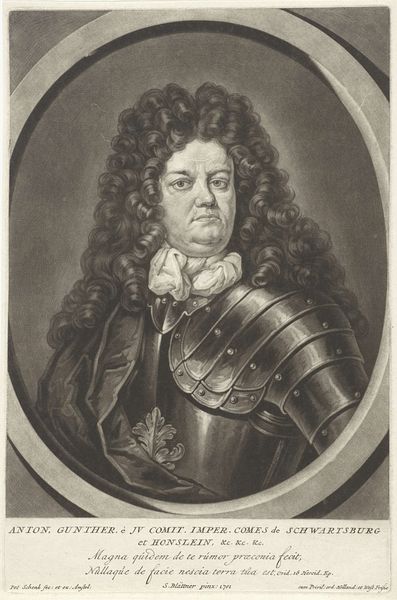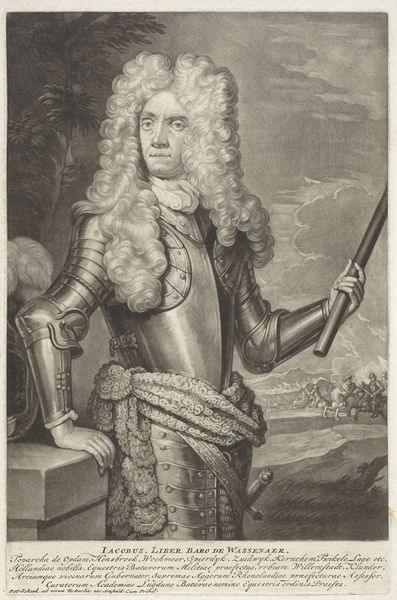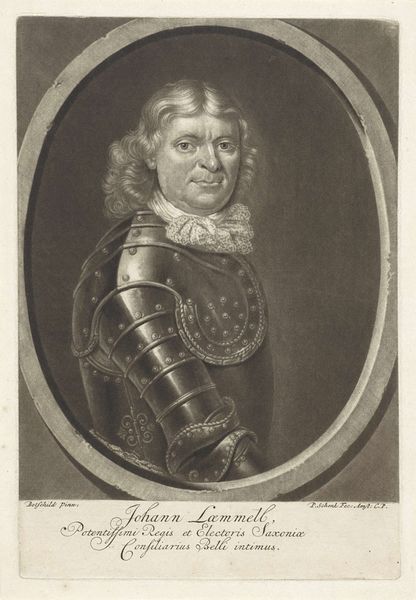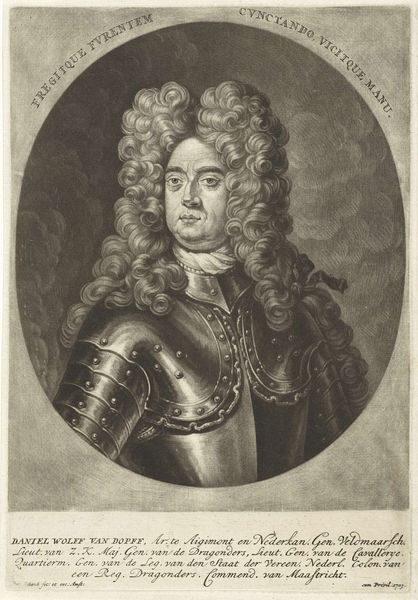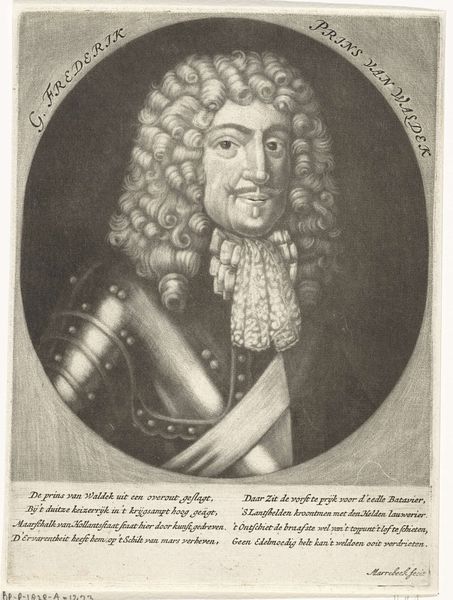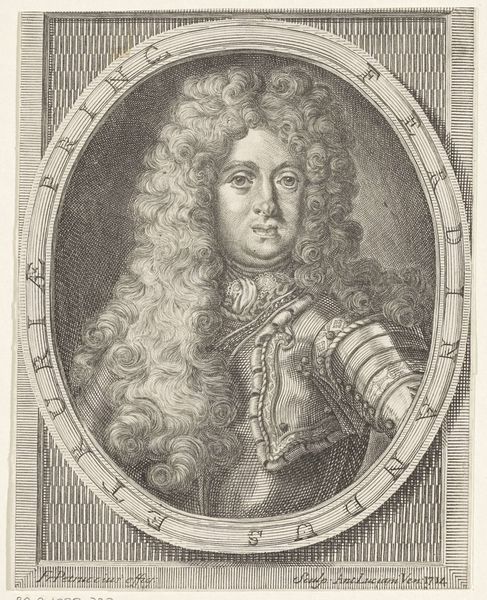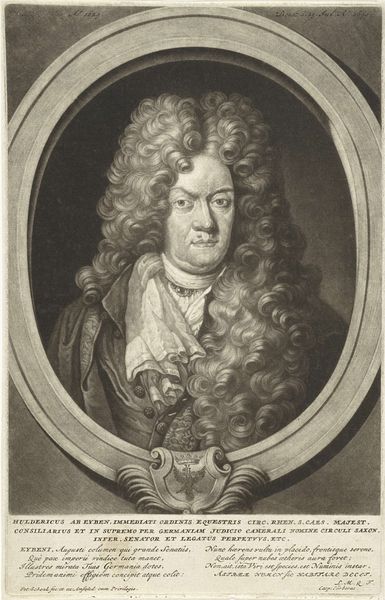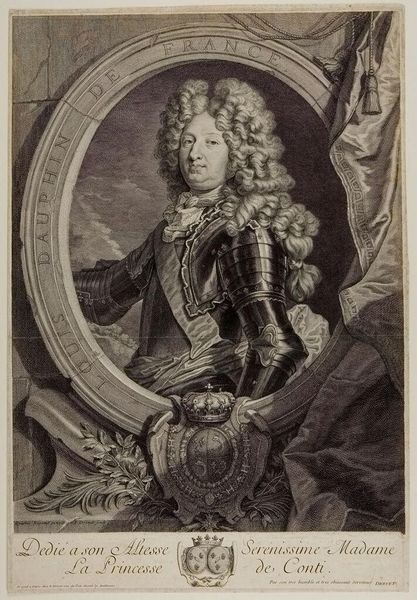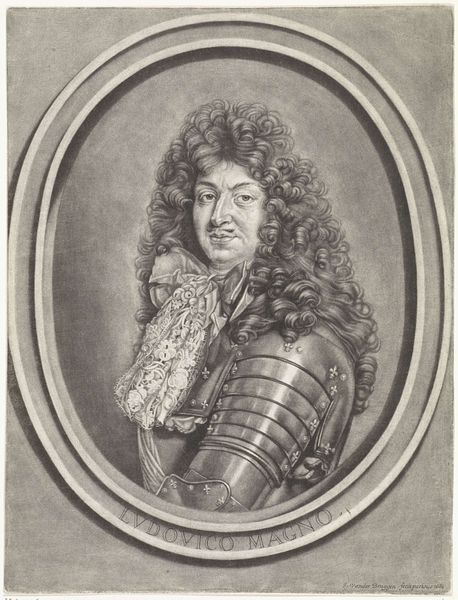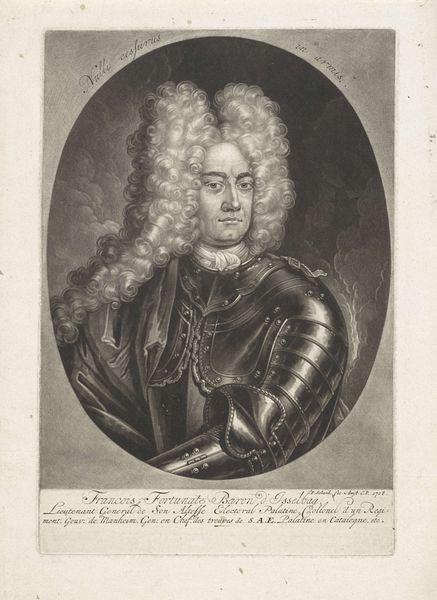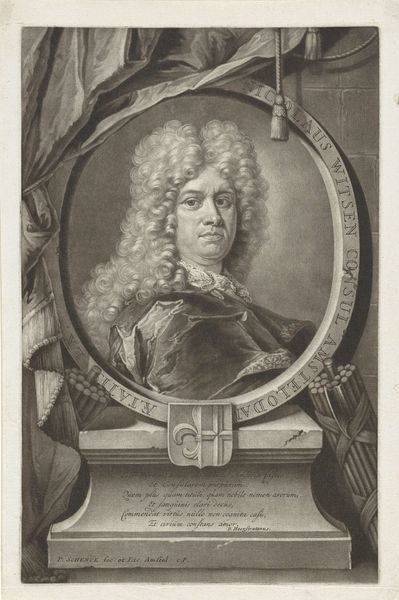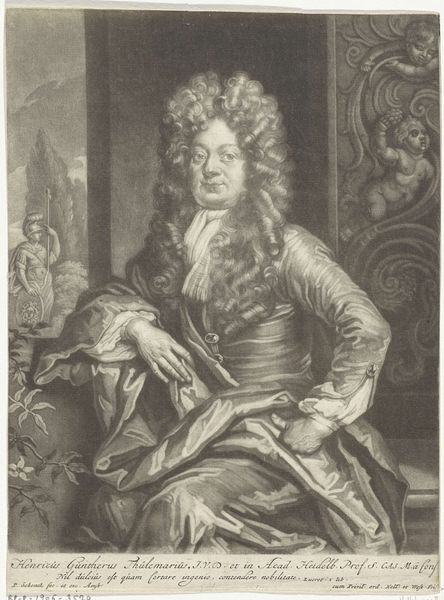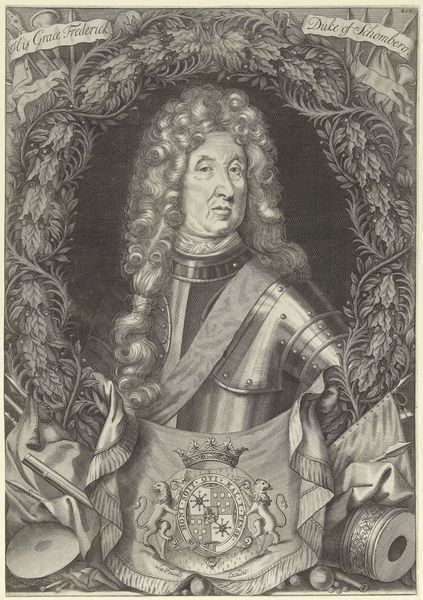
engraving
#
portrait
#
baroque
#
old engraving style
#
portrait reference
#
portrait drawing
#
engraving
Dimensions: height 270 mm, width 187 mm
Copyright: Rijks Museum: Open Domain
This is Pieter Schenk’s portrait of Cornelis Cruys, produced around the turn of the 18th century. Here, we see Cruys adorned in full armor, a symbolic garb reminiscent of classical heroes, designed to evoke courage and military prowess. His imposing wig, fashionable yet somewhat theatrical, marks an era of elaborate self-presentation. Notice the ships in the background, a nod to his naval achievements. This motif hearkens back to ancient Roman triumphs, where naval victories were celebrated with depictions of ships and sea battles. Just as Roman emperors used such imagery to assert dominance, Cruys's portrait employs these symbols to convey authority and success. But let us consider the cyclical nature of such imagery: armor, once functional, becomes symbolic; ships, once tools of war, become emblems of power. These symbols resonate across centuries, echoing in our collective memory. They resurface, transformed, reminding us that history is not linear, but a continuous, spiraling dance of images and ideas.
Comments
No comments
Be the first to comment and join the conversation on the ultimate creative platform.
